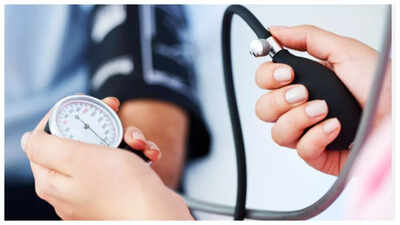
For those who suffer from Hypertension, measuring Blood Pressure on an everyday basis is extremely important to prevent issues like heart attack and stroke. While blood pressure varies through the day, and is influenced heavily by diet, exercise, sitting posture etc, taking an average reading at the same time everyday can help you monitor your heart health, and take adequate measures to fix it.
However, did you know that the way you hold your arm while taking your blood pressure can change the reading? Holding your arm incorrectly can give a falsely high or low number, which can lead to various issues. Here's why...

How it mattersBlood pressure shows the force of blood pushing against your artery walls. High blood pressure (hypertension) can increase the risk of heart disease, stroke, and kidney problems. To keep track of your blood pressure, you need accurate readings, especially if you measure it at home.If your blood pressure is measured incorrectly, it may seem higher or lower than it really is. This can cause unnecessary worry or delay in treatment. One common cause of inaccurate readings is how you position your arm during measurement.Why arm position mattersT
he key point is that your arm should be supported at heart level when measuring blood pressure. If your arm is too low or too high, the readings can be wrong.Arm below heart level: Blood pressure reading may be falsely high.Arm above heart level: Blood pressure reading may be falsely low.Arm unsupported or hanging down: Can cause higher readings due to muscle tension.This happens because the pressure in your arteries changes depending on the height of your arm relative to your heart. When the arm is lower than the heart, gravity increases pressure in the arteries, making the reading higher than actual.
When the arm is higher, pressure is reduced, leading to a lower reading.How to hold the arm correctlyFollow these simple steps:Sit in a chair with your back straight and supported.Keep your feet flat on the floor, do not cross your legs.Rest your arm on a flat surface like a table.Position your arm so that the middle of the cuff is at the same level as your heart.Keep your arm relaxed and still during the measurement.Make sure the cuff is wrapped snugly around your bare upper arm, about 1 inch above the bend of your elbow.Using a pillow or folded towel to support your arm can help maintain the right height and comfort.

Other tipsBesides arm position, these tips will help you get the most accurate reading:Rest quietly for 5 minutes before measuring your blood pressure.Avoid smoking, caffeine, or exercise 30 minutes before the test.Take the measurement on bare skin, not over clothing.Do not talk or move during the reading.Take at least two readings, 1 minute apart, and record the results. (use an average reading)Use a properly calibrated and validated blood pressure monitor.Measure your blood pressure at the same time each day for consistency.Sources:American Heart Association: How to Measure Your Blood Pressure CorrectlyCenters for Disease Control and Prevention: Measuring Your Blood PressureMedlinePlus Medical Encyclopedia: Blood Pressure MeasurementHarvard Health Publishing: Tips to Measure Your Blood Pressure CorrectlyCleveland Clinic: How to Take Blood Pressure Measurements

 14 hours ago
52
14 hours ago
52




























 English (US)
English (US)